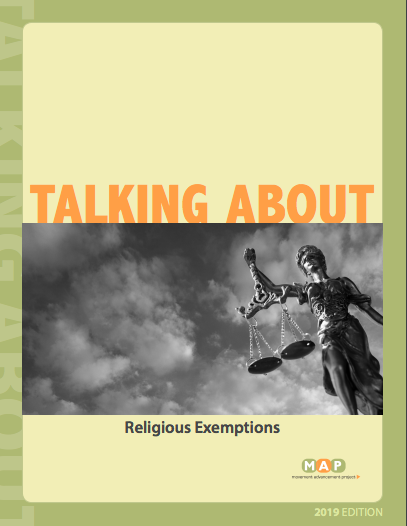The Bottom Line
Newly Updated for 2019. Talking About Religious Exemptions is a guide to building effective conversations about the ways in which harmful religious exemptions threaten public safety, access to health care (including women's reproductive health), the best interests of children in state care, laws protecting Americans from discrimination, and more.
The guide offers approaches for talking about both broad religious exemptions laws (like proposed state RFRAs) as well as religious exemptions intended to encourage adoption and foster care discrimination and service discrimination—elevating effective discussions about the ways these harmful exemptions can be used to deny children loving forever homes; encourage discrimination against LGBT people, religious minorities, people of color, women and others; threaten health care and women’s reproductive health; and put the rule of law itself at risk.
Talking About Religious ExemptionsDownload
Recommended citation:
Movement Advancement Project. May 2019. "Talking About Religious Exemptions." 2019 Edition. MAP's
Talking About LGBT Issues Series.
https://www.lgbtmap.org/talking-about-religious-exemptions


